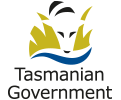3. Policy statement
The policy statements provide overarching guidance to all Tasmanian Government communications activities.
It is the policy of the Tasmanian Government that all its communications activities:
1. Encourage public engagement through the provision of information and consultation
The Government has a responsibility to ensure that accurate and relevant information about its policies, programs and services is disseminated or made available to the public in a timely manner. Government should also engage openly and responsively by seeking and considering public input and feedback when establishing priorities and planning or reviewing its activities.
2. Provide information through channels and via formats that meet the needs of all community members
The Government recognises that not all individuals or groups are equally placed to access and understand government information. Particular attention should be given to ensuring information is accessible and easily understood by people with diverse communication needs, including people:
- with low levels of literacy
- with sensory or cognitive disabilities
- who rely on assistive technology
- from culturally and linguistically diverse communities
- with limited access to technology
3. Reflect the diversity of society
Government communications must depict diversity in society in an inclusive manner. Communications must not contain unacceptable language, sexual or cultural stereotyping, or unfair or negative depiction of people in relation to race, ethnic origin, disability, age, gender or sexual orientation.
4. Ensure the Government is visible and identifiable to the public
Clear and consistent branding enables the public to recognise Tasmanian Government activities, improving awareness of and access to information about government policies, programs and services. The public can also have confidence in the credibility and authority of information clearly identifying government as its source.
5. Are an integral component of the strategic management processes
It is essential that agency strategic planning considers communications as an essential tool to achieve organisational goals. Internal and external communication requirements for effective communication must be identified and taken into account when developing or reviewing policies, programs and services.
6. Foster a cooperative and collaborative approach to communication across government
Communications on whole-of-government themes or issues, require cooperation and coordination between agencies to ensure government messages are clearly and consistently communicated to the public. This requires communications specialists with an awareness of whole-of-government themes to work with senior management, policy officers and staff involved in program delivery, and to liaise with communications colleagues across government.
7. Deliver value for money and meet all government procurement requirements
Government communications activities should be subject to a cost-benefit analysis to ensure the method, medium and volume can be justified in relation to the need to communicate. There must be a clear record of decision making, particularly in relation to expenditure, which must meet all government procurement requirements.
